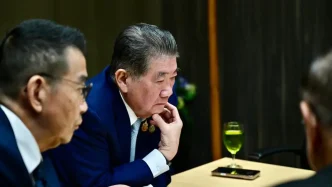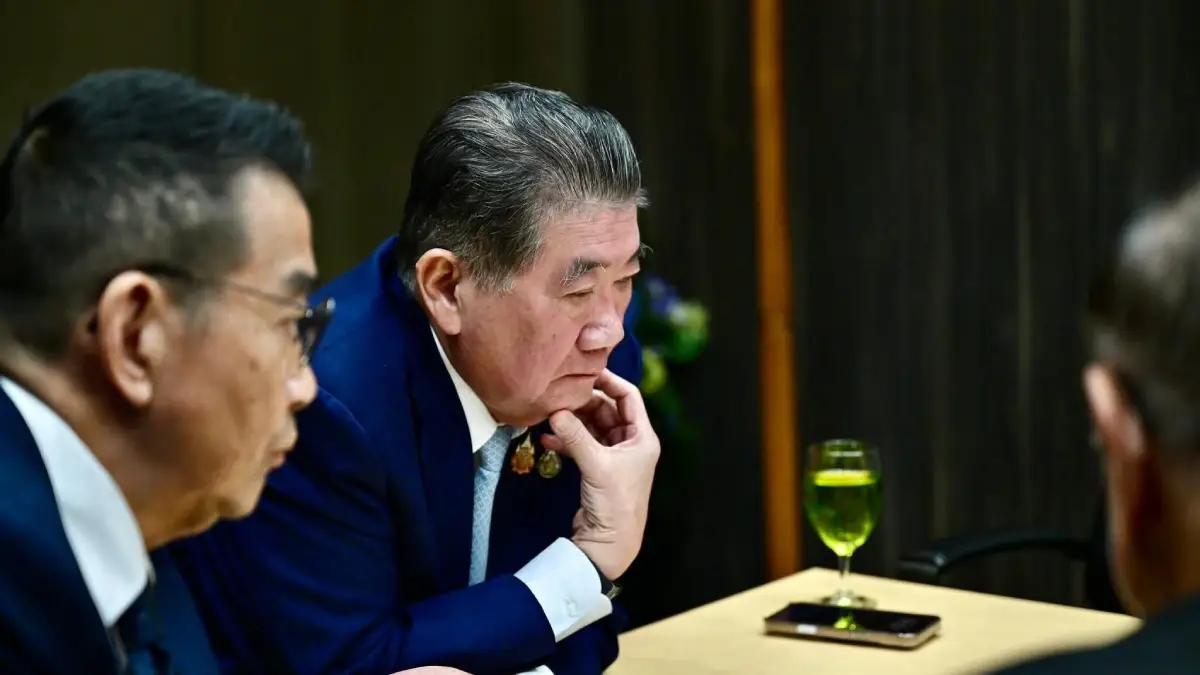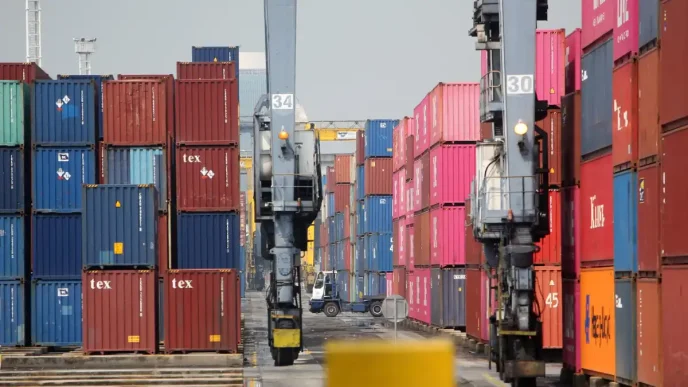Thailand has clinched a significant trade agreement with the United States, securing a 19% tariff rate on its exports—substantially lower than the initially threatened 36%—as announced by the government on Friday. This deal, finalized just before the revised US deadline of August 7, comes alongside a package of domestic support measures aimed at cushioning businesses and farmers from the impact of these new trade terms. With the US being Thailand’s largest export market, accounting for roughly 18% of total shipments last year, the agreement marks a pivotal moment in the nation’s economic strategy amid a shifting global trade landscape.
******
A Narrow Victory in Trade Talks
The tariff negotiations unfolded against a backdrop of heightened regional tension and looming deadlines. US President Donald Trump had initially set August 1 as the date for imposing tariffs on a range of trading partners, only to extend it to August 7 mere hours before implementation. Thailand’s agreement came on the heels of a ceasefire with Cambodia on July 28, which ended a week of deadly border clashes that claimed at least 41 lives. Both Thailand and Cambodia secured identical 19% tariff rates, a rate that aligns closely with other ASEAN nations such as Indonesia (19%) and Vietnam (20%).
Deputy Prime Minister and Finance Minister Pichai hailed the outcome as a testament to the robust Thai-US relationship. In a social media post on Friday morning, he stated: “The 19% tariff rate reflects strong Thai-US friendship and keeps Thailand globally competitive while boosting investor confidence and creating new economic opportunities.” Discussions during the negotiations, according to Pichai, centered on economic and trade matters—covering tariff rates, bilateral trade items, investment plans, and non-tariff measures—rather than issues like natural gas or security.
The terms of the deal specify that Thai goods exported before August 7 will face a 10% tariff upon reaching the US, while those shipped after this date will be subject to the new 19% rate. The next steps, including detailed implementation plans, are set to be reviewed by the Thai Cabinet in the coming weeks.
Domestic Measures to Mitigate Impact
While the reduced tariff rate offers some relief, Thai officials are under no illusion that the work is complete. Pichai emphasized the need for urgent action to address technical, legal, and domestic challenges to fully capitalize on the agreement. “The government recognizes impacts on entrepreneurs and farmers, so we’ve prepared comprehensive support: budget allocations, soft loans, subsidies, tax measures, and regulatory reforms to help Thailand adapt to the future economy” he affirmed during a press briefing.
These measures are designed to bolster sectors most vulnerable to the tariff hike, particularly small and medium-sized enterprises and agricultural producers who form the backbone of Thailand’s export economy. The government’s strategy includes accelerating economic adaptation to ensure resilience against future global trade shocks. Specific details of the support package—such as the scale of budget allocations or eligibility criteria for subsidies—have yet to be disclosed, but officials have pledged a swift rollout to minimize disruption.
Economic Implications and Investment Shifts
Thailand’s trade relationship with the US is a critical pillar of its economy. The country currently imports goods worth approximately 20 billion Thai Baht (~US$610 million) from the US annually, a figure that could see a modest uptick under the new agreement. Thai officials are aiming for export growth to match or exceed import levels, with a particular focus on processed and high-value products that could strengthen market share in the US.
Investment strategies are also being recalibrated as part of this trade deal. Thailand is eyeing opportunities in agricultural processing, leveraging US raw materials for products that could be re-exported to Thailand or sold within the US market. Pichai noted that Thailand has offered zero-percent tariff rates to other countries under existing free trade agreements and hinted at the possibility of extending similar concessions to the US for select products. “We’ve offered 0% to other countries in FTAs, so we might do the same with the US since we have no issues with those products” he explained.
Energy trade could also see a boost, with Thailand considering a potential 10% increase in crude oil imports from the US, provided pricing and conditions are favorable. The country currently consumes 1.2 million barrels of crude oil daily from various sources, and contracts for enhanced US imports are expected to commence in 2026 if negotiations progress smoothly.
Regional Competitiveness in Focus
The tariff agreement positions Thailand favorably within the ASEAN bloc, where maintaining competitiveness is paramount. Government spokesman Jirayu Houngsap described the 19% rate as a major success achieved through a collaborative win-win approach by what he termed “Team Thailand.” This rate aligns closely with those imposed on other regional players, ensuring that Thailand’s export base remains on a level playing field with neighbors like the Philippines and Malaysia, both of which also secured 19% rates.
The Thai Chamber of Commerce echoed this sentiment, commending the negotiating team for slashing the potential tariff burden from a reported 36% to the finalized 19%. Poj Aramwattananont, Chairman of the Thai Chamber of Commerce and Board of Trade of Thailand, praised the effort: “Although this rate is higher than the baseline 10%, it represents excellent work considering Thailand initially faced reports of a potential 36% tariff. The negotiating team’s ability to reduce this figure to 19% within a limited timeframe demonstrates genuine commitment, strategic understanding, and proactive operational capabilities.”
However, the Chamber also urged the government to go further, advocating for additional support measures to help Thai businesses expand into new markets and adapt to the evolving trade environment. Key areas of focus include technology adoption, financial assistance, and trade innovation programs. Poj stressed the importance of monitoring the US-imposed 40% trans-shipment rate applicable to all countries, as well as preparing contingency plans for importing US goods under the new tariff regime. “We need support measures, assistance programs, and initiatives to boost new capabilities so Thai businesses can adapt and stay competitive under the new global trade rules” he added.
Broader Context of US Trade Policy
Thailand’s agreement is part of a broader wave of tariff adjustments initiated by the Trump administration. On Thursday, President Trump signed an executive order implementing new tariffs on a wide array of US trading partners, effective from August 7. This move, part of his broader trade agenda, aims to recalibrate global economic relationships and test the resilience of long-standing American alliances. The White House finalized agreements with several nations and blocs in the days leading up to the deadline, harmonizing the tariff schedule for a synchronized rollout.
In a last-ditch effort to avoid punitive rates, Thailand had offered significant concessions, including scrapping tariffs on 90% of US goods and committing to non-tariff measures to reduce its substantial $46 billion trade surplus with the US by 70% within three years. Additionally, Thailand pledged to address the rerouting of goods produced in other countries through its borders, a practice known as transshipment that has drawn scrutiny from US trade officials.
Looking Ahead: Challenges and Opportunities
As Thailand navigates the implications of this tariff agreement, the dual focus on domestic adaptation and regional competitiveness will be critical. The government’s support measures, while promising, must be implemented with precision to ensure they reach the most affected sectors without delay. At the same time, Thai businesses face the challenge of innovating under tighter trade constraints, potentially accelerating a shift toward higher-value exports and diversified markets.
The agreement also raises questions about the future trajectory of Thai-US economic relations. Will Thailand’s concessions—such as greater market access for US products and potential increases in crude oil imports—translate into long-term mutual benefits, or will they strain domestic industries already grappling with global uncertainties? As the Cabinet deliberates on the next steps, the balance between immediate relief and sustainable growth remains a pressing concern.
For now, Thailand has averted the worst-case scenario of a 36% tariff, securing a rate that preserves its standing among ASEAN peers. Yet, with the global trade environment in flux, the path forward demands agility and foresight to turn this narrow victory into lasting economic stability.
















